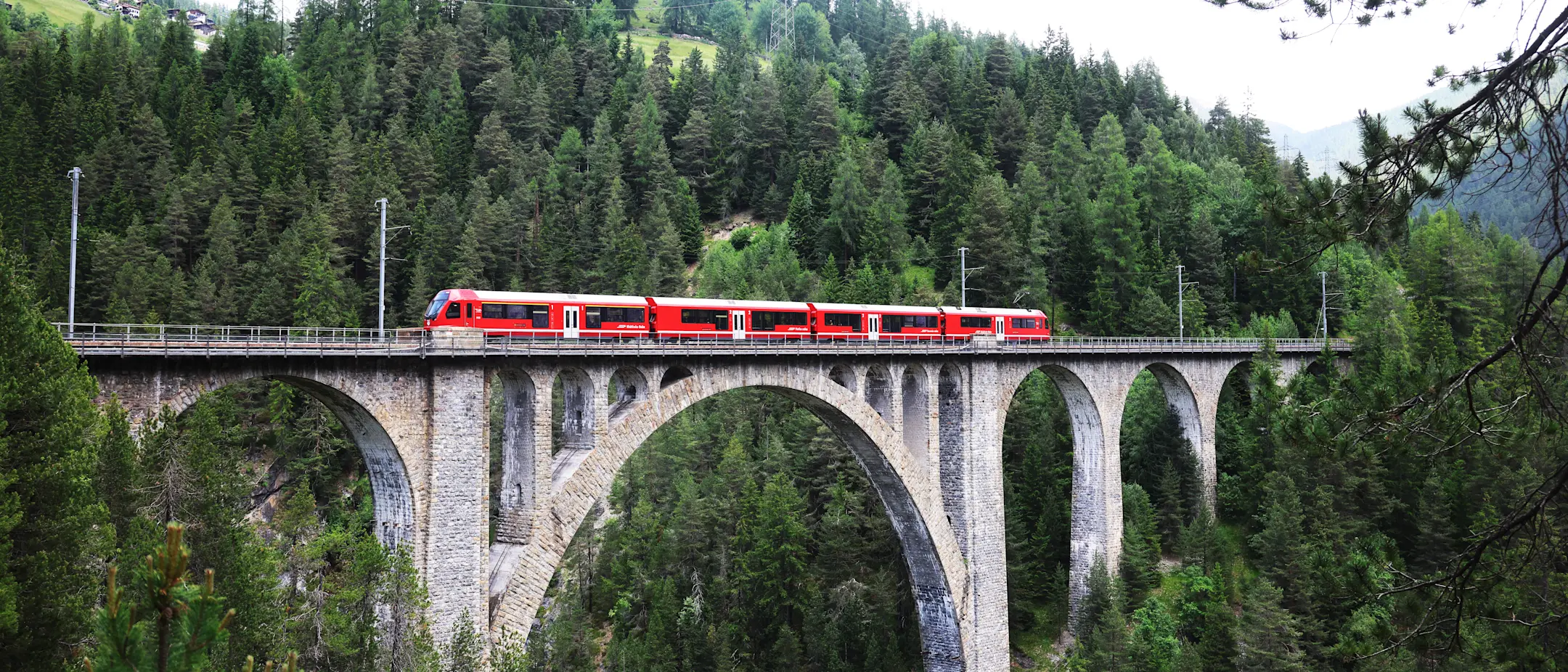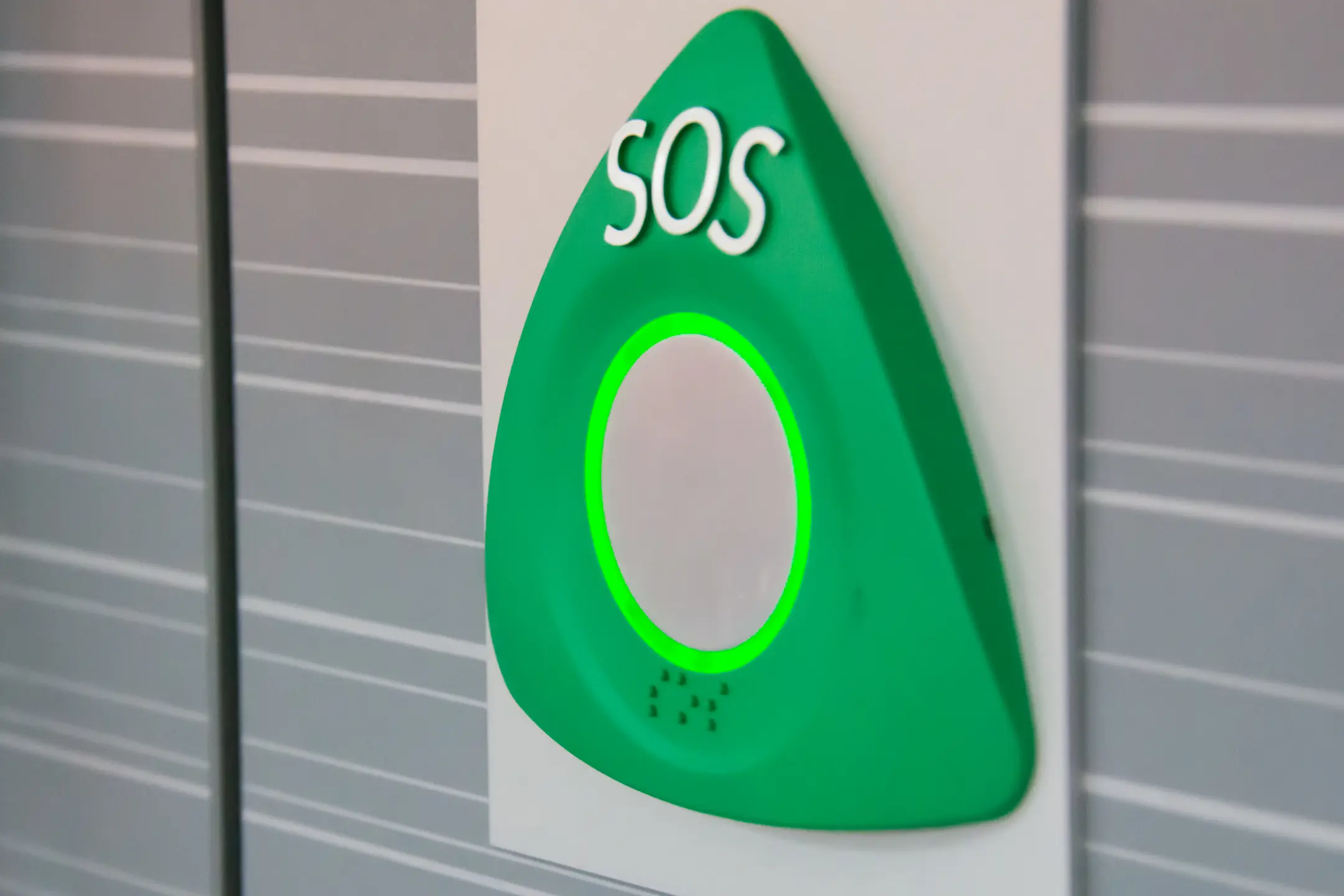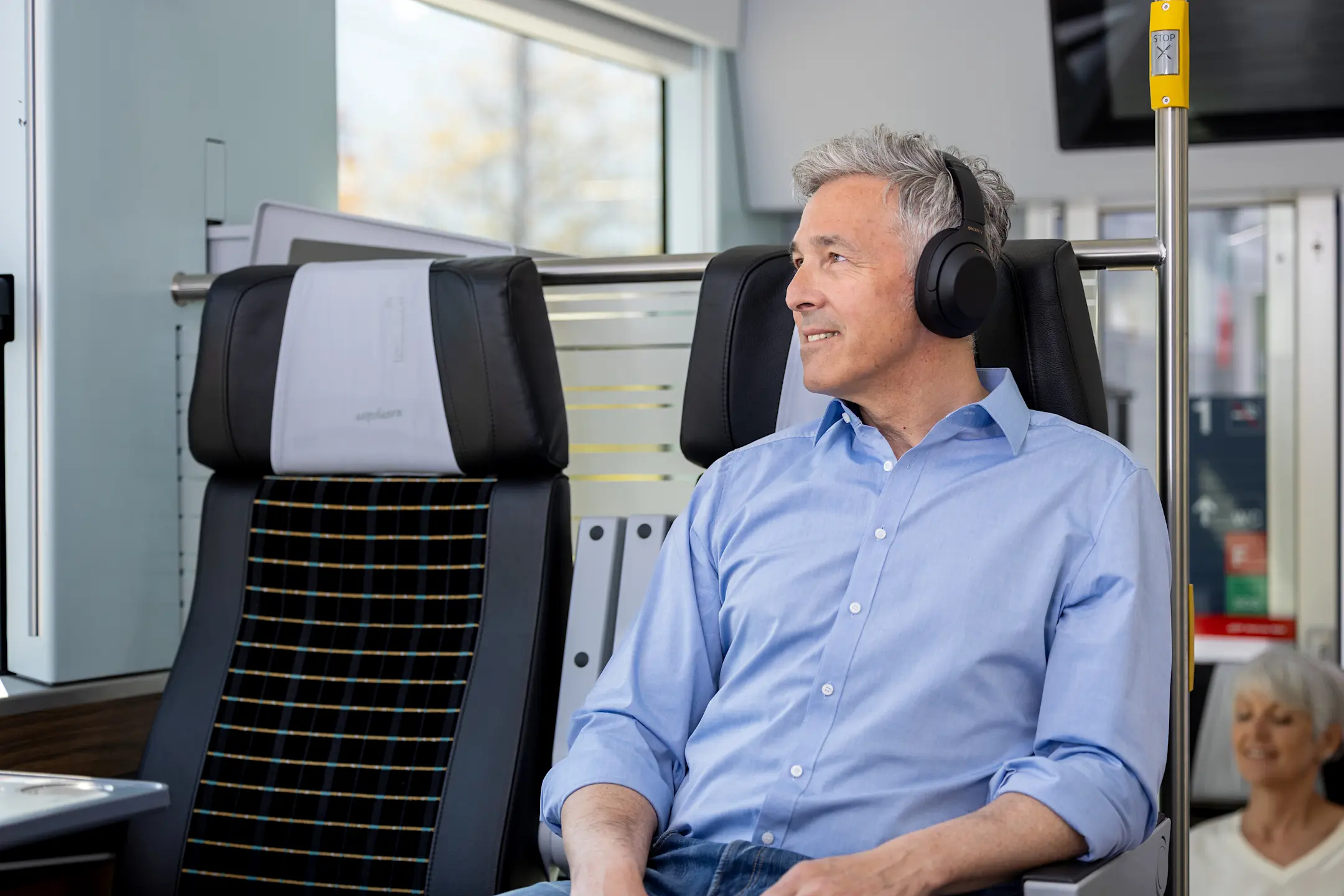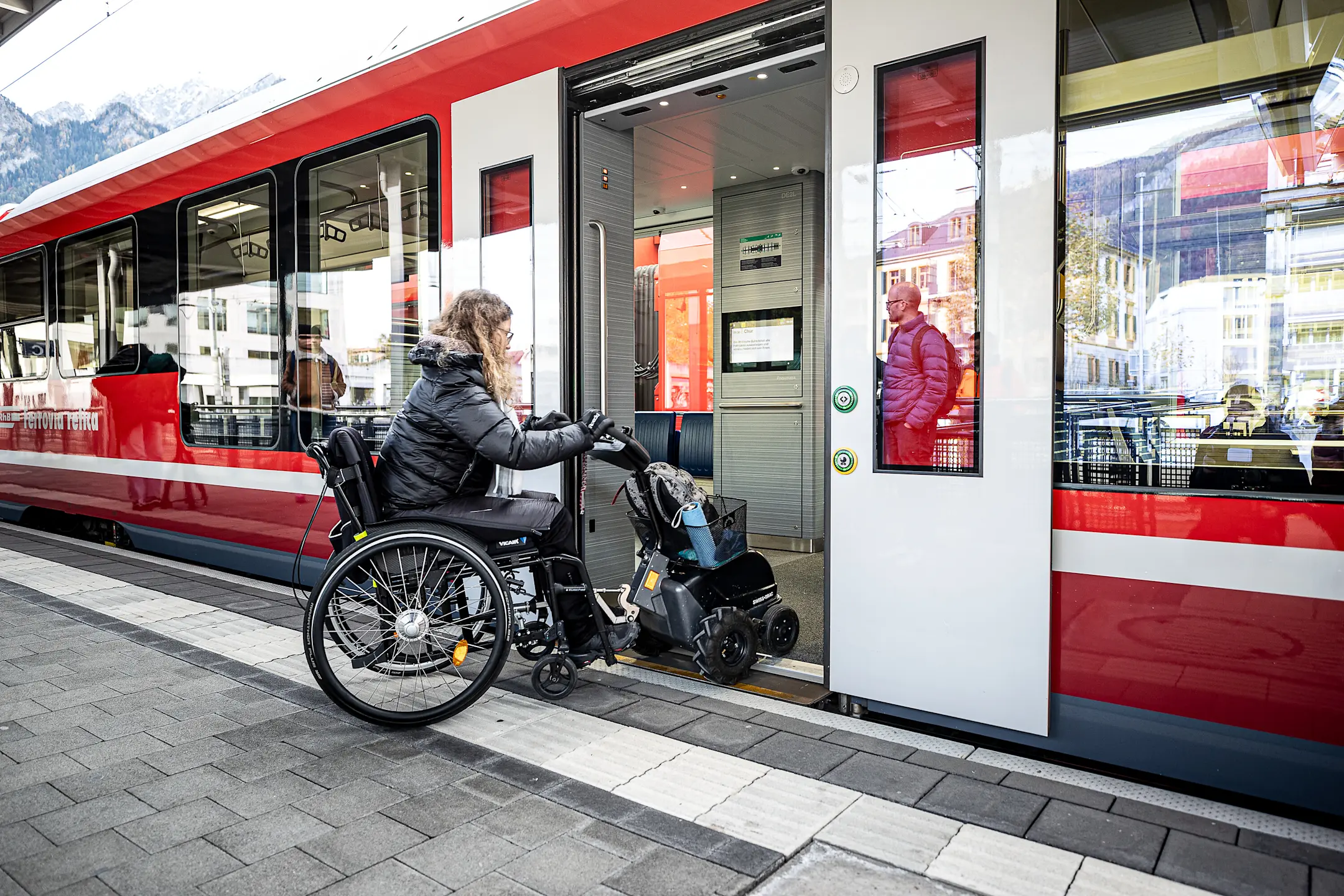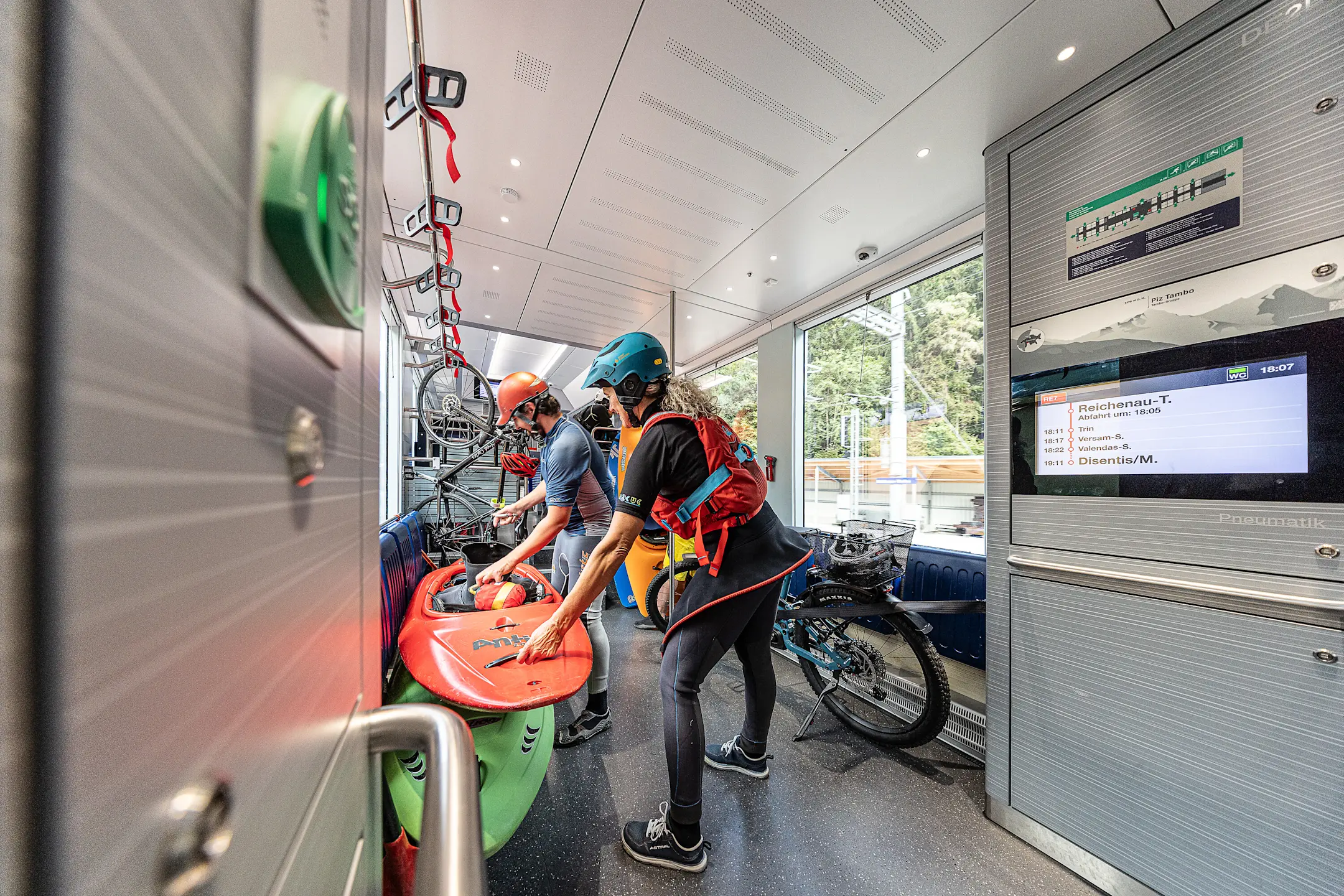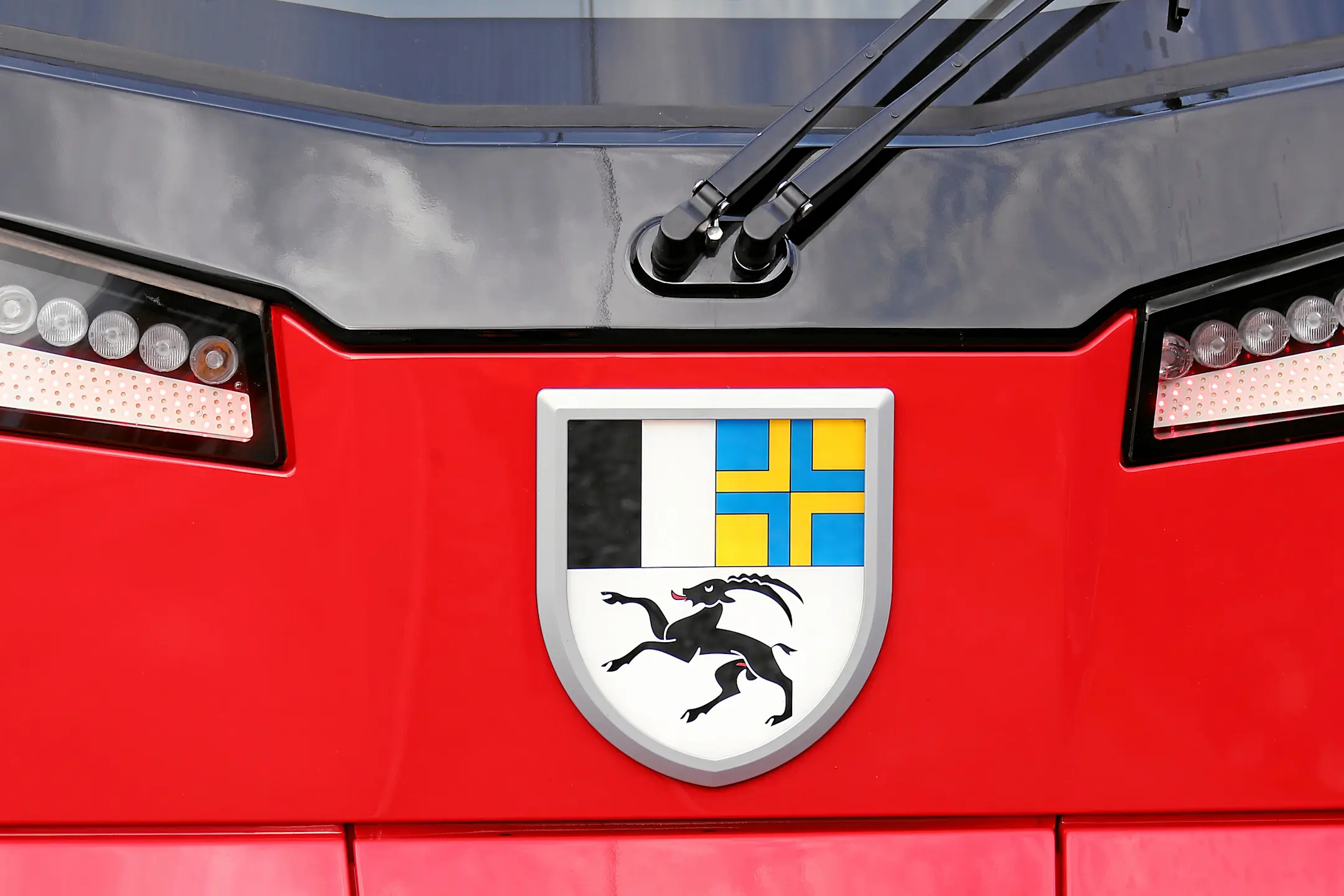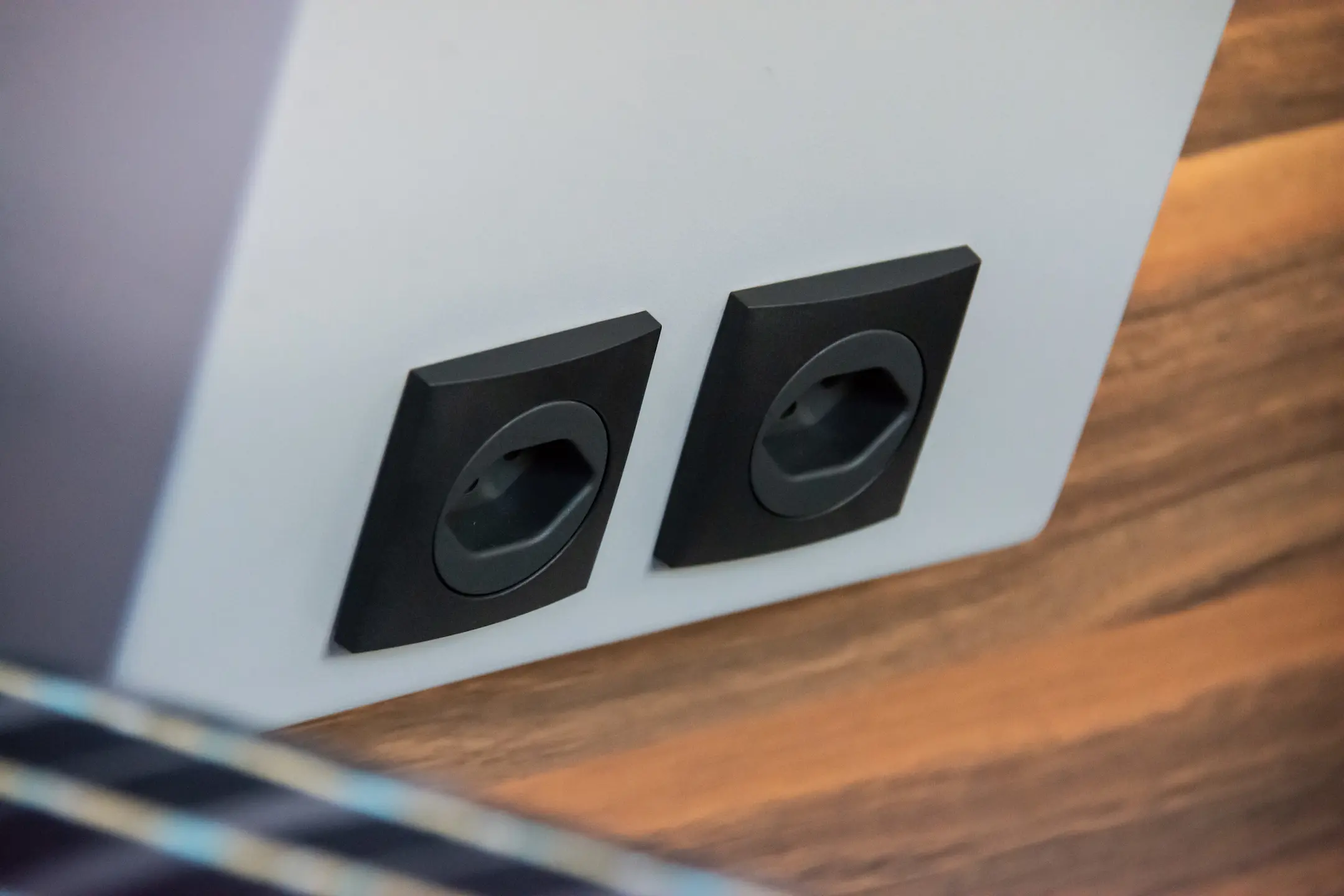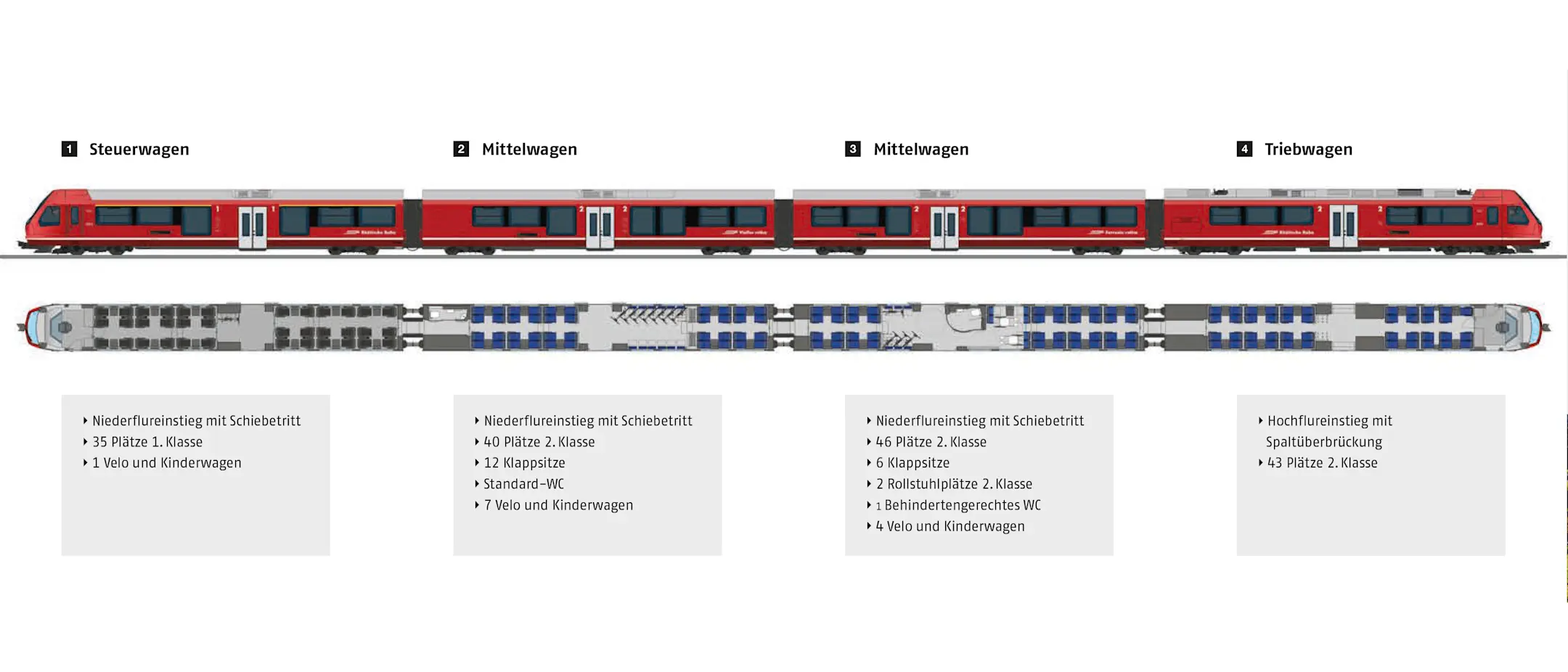Our separable Capricorn multiple-unit trains have been travelling on the Rhaetian Railway network since 2020. They offer passengers a high level of comfort and low-floor entrances. Equipped with automatic couplers, the multiple units enable the RhB to operate efficiently.
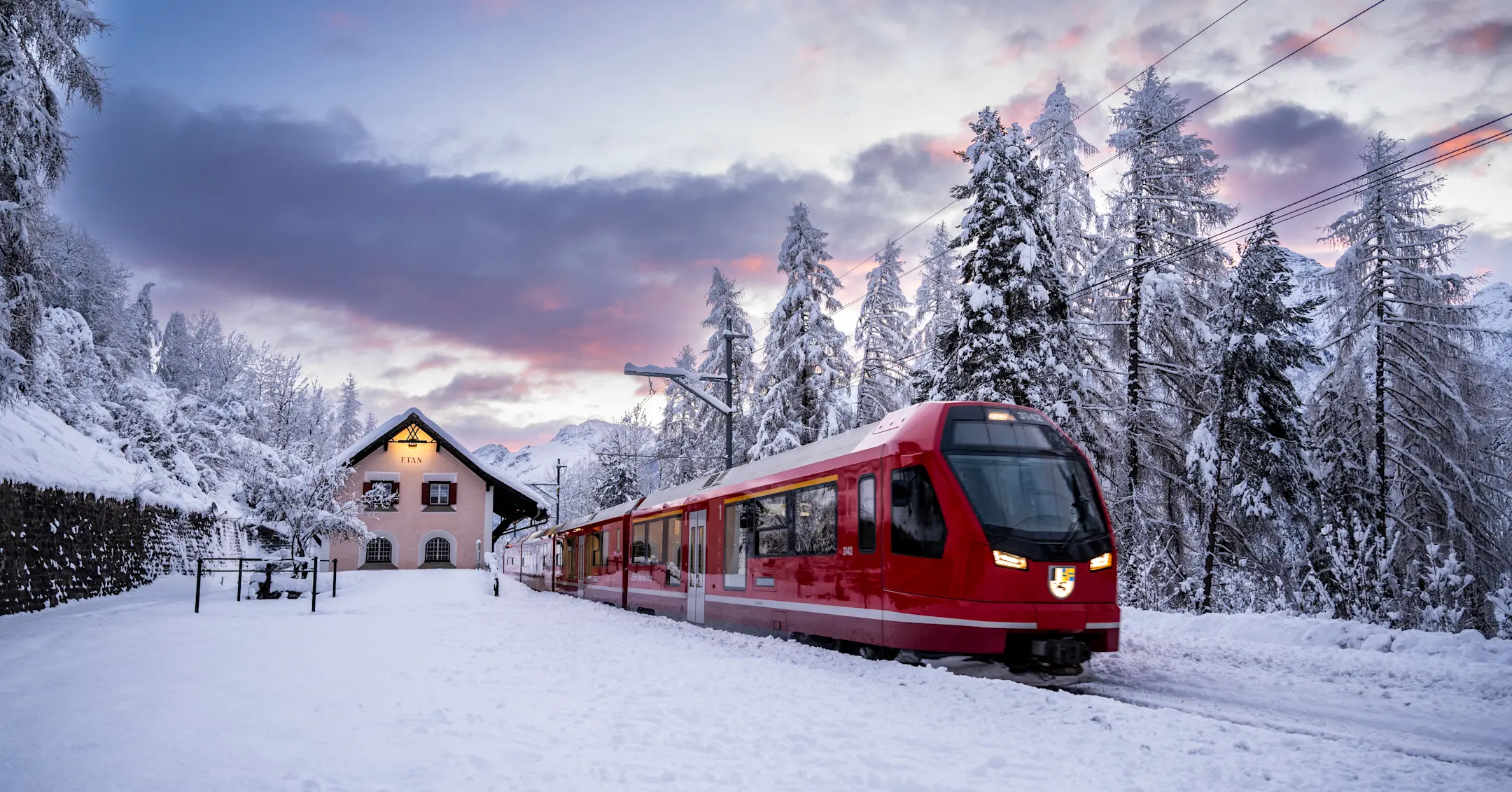
Comfortable equipment
Each of these 76.44 metre-long separable multiple-unit trains has 35 seats in first class, 129 seats in second class and two places for wheelchair users. The trains offer a high level of passenger comfort, while fulfilling the requirements of Switzerland's disability equality laws. The wide doors are designed to allow passengers to get on an off quickly and easily at each stop, and the high proportion of low-floor accesses also contributes to ease of entry and exit. These separable multiple-unit trains offer sufficient space for bicycles, skis, sports equipment, prams and luggage.
Facts and figures about Capricorn railcars
Railcar data
Number of Capricorn railcars
56 in service, 6 additional Capricorn railcars to be delivered in the second half of 2026
Technical designation
ABe 4/16 3111-3166
Area of use
Landquart - Davos - Filisur Landquart - Scuol/St. Moritz Chur - Disentis/Mustér
Total length over coupling
76,43 m
Vehicle width
2,67 m
Vehicle height
3,78 m
Tare weight
119 t
Gross weight
146 t
Number of seats 1st class (of which low-floor)
35 (12)
Number of seats 2nd class (of which low-floor)
129 (14)
Number of folding seats
18
Number of spaces for wheelchairs
2
Number of standing spaces
179
Number of toilets
1 wheelchair accessible 1 standard
Access width
1,2 m
Floor height
960 mm / 1053 mm at high-floor level 450 mm at low-floor level
Top speed
120 km/h
Maximum power at the wheel
1600 kW
Continuous power at the wheel
1000 kW
Starting tractive force (up to 41 km/h)
142 kN
Axle layout
Bo'Bo+2'2+2'2'+2'2'
Capricorn railcars enable multi-unit train operation
Thanks to the state-of-the-art Capricorn railcars, RhB is able to implement the principle of “coupling”. Two to four railcars initially travel together as one train, for example from Landquart to Klosters Platz. There, they are automatically separated and continue their journey in different directions – for example, to St. Moritz and Davos. In the opposite direction, the train parts are coupled again and continue to run as one train. This concept increases flexibility and efficiency in rail transport.
